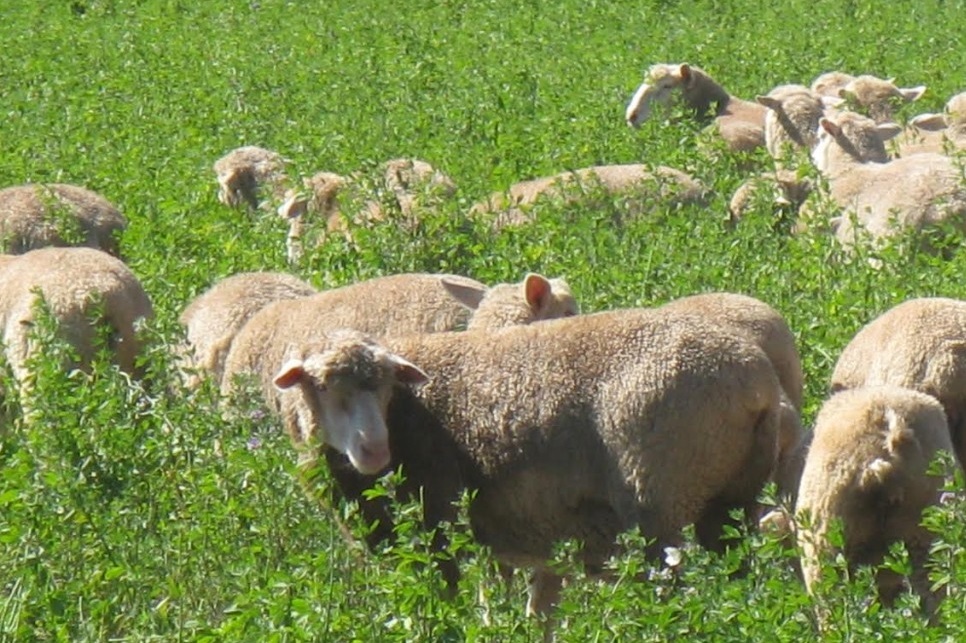
Lambs grazing lucerne. Image – Agriculture Victoria.
AGRICULTURE Victoria scientists have confirmed what has been known for years – that adding lucerne hay to sheep diets provides a host of benefits.
Research the scientists regard as the first in the world to prove a diet supplemented with lucerne hay is equal to a feedlot diet has shown the legume improve the productivity and nutritional value of sheep meat in a changing climate.
Agriculture Victoria scientist Eric Ponnampalam said the latest research further confirms more than a decade of studies that demonstrate adding lucerne to sheep diets provides a host of benefits.
“This research is the first in the world to prove a diet supplemented with lucerne hay is equal to a feedlot diet.
“Climate change is causing the yield, persistence and nutritive value of pastures to decline in many parts of southern Australia, particularly during the summer and autumn months,” Dr Ponnampalam said.
Agriculture Victoria said supplementing diets with cereal grains, legume seeds or concentrates over summer and autumn can maintain animal growth rates during periods when pastures are sparse. However, supplements are costly and may cause digestive problems such as acidosis or bloating unless appropriate feeding strategies are maintained.
Dr Ponnampalam said the project compared feeding a low-energy diet supplemented with lucerne hay to a high-energy diet supplemented with a barley-oat grain mix, to crossbred and Merino sheep.
The results demonstrated that using lucerne hay rather than grains as a supplement had a range of advantages and didn’t negatively affect liveweight or carcase weight at slaughter of either breeds.
“Lucerne hay is a win-win.
“It maintained the animal’s body weight equal to the grain diet and was better at both providing essential nutrients and preserving the meat’s red colour,” Dr Ponnampalam said.
“Colour is very important, as consumers don’t buy meat that has turned brown – the cuts are immediately removed from retail display and turned into mince or go on sale.
“Our findings offer farmers a cheaper, home-grown solution to maintaining year-round productivity on-farm, particularly when faced with the impacts of climate change on their feedbase.”
Dr Ponnampalam said farmers can harvest lucerne in spring, store it as a hay or silage, and subsequently feed to livestock in summer and autumn when required. Therefore, farmers can sell larger carcases at a lesser expense.
“Lucerne is also easier for farmers to store than grain, and it can improve soil fertility via nitrogen fixation when used as a rotational crop.
“Our research is identifying lucerne as having the potential to be a ruminant diet, not only for sheep, but for cattle and dairy as well.”

I am pleased to read your opinion of lucerne. I have been led to believe lucerne has fantastic nutritional values, yet I struggle to find any information about using it in a feedlot-type mix. Why? Can you help please? Thank you.